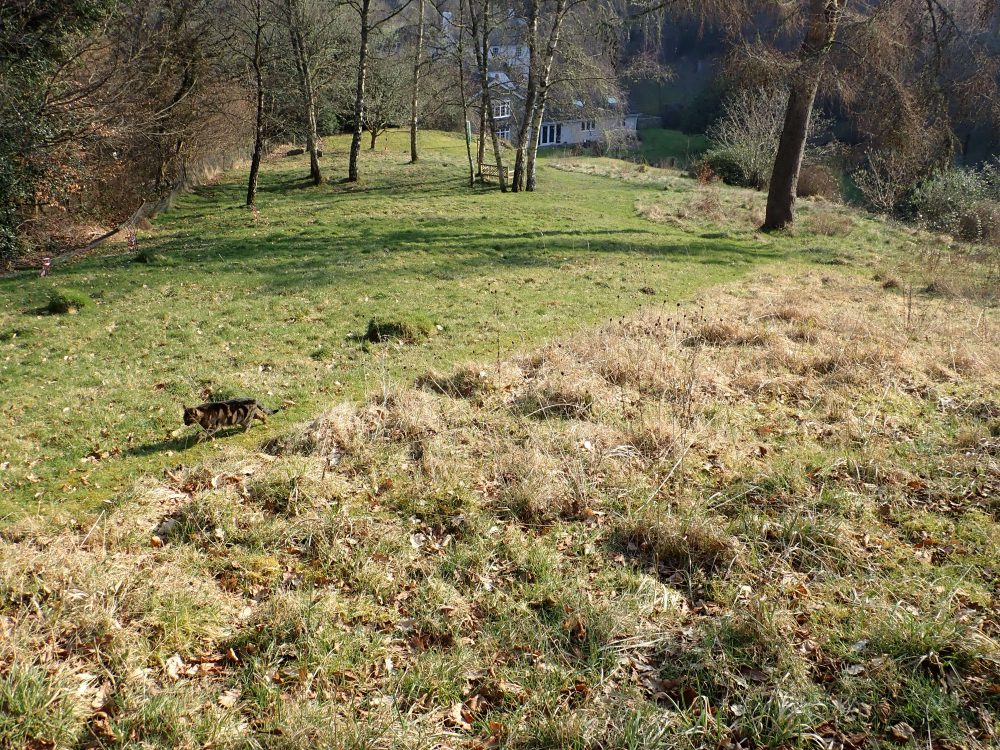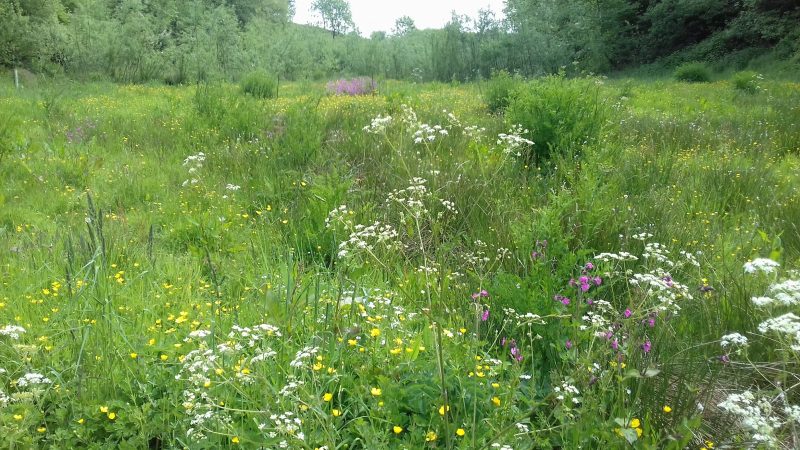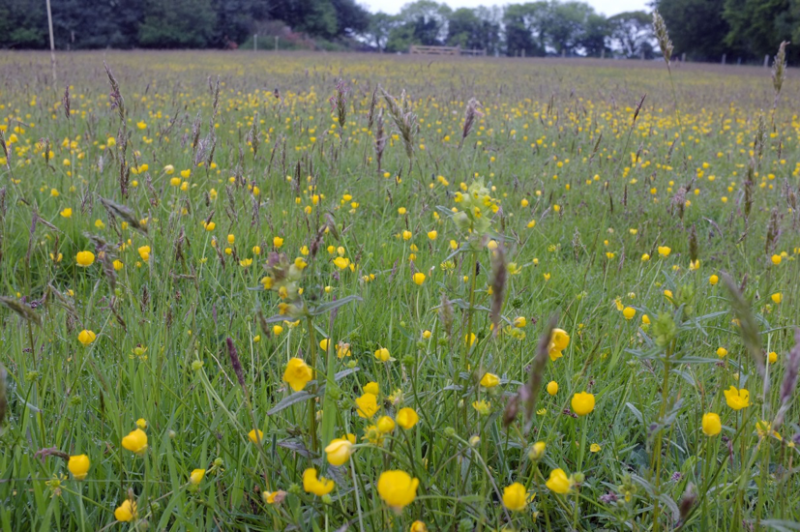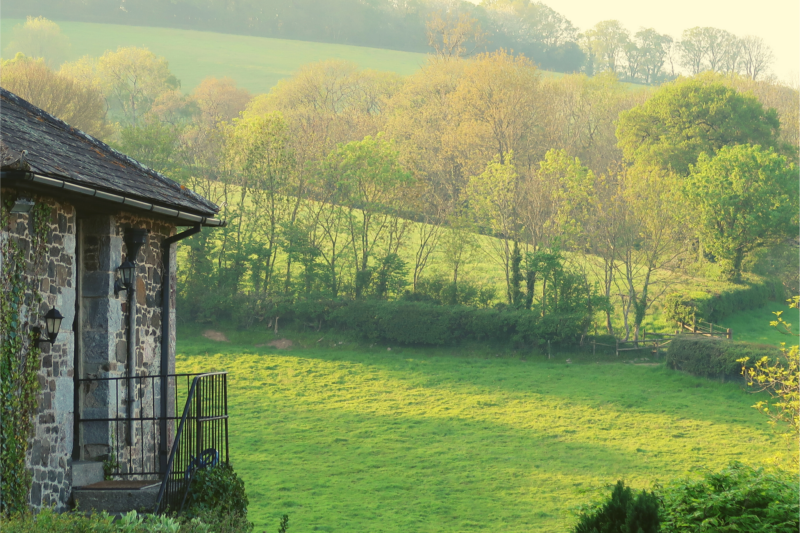Bas and Rosemary Payne
Clifford Bridge
Bas and Rosemary Payne let the grass grow up in a wild area of their garden and were bountifully rewarded - with many wildflowers, butterflies, slow worms and more.

Six years ago, we moved into our present house at Clifford Bridge, near Moretonhampstead. Its two acre garden, mostly semi-natural with a stream running through the length of the garden, was what had drawn us to buy the house; and included half an acre of rough grass running up a fairly steep ridge, facing south and east. This, like the other smaller grass areas in the garden, had been mowed several times a year by the previous owner. Having arrived in early Spring, it didn’t look all that promising – mainly coarser grass, and seeing a pattern of odd ridges and small flat areas, we learned that it had been cultivated, probably for potatoes, in World War II, and had had at least two chicken sheds on the flat areas which had probably been removed in the 1960s or 1970s. So, without great expectations, we decided to leave it uncut for the first year and see what we had.
The first pleasant surprise was to see lots of bluebells coming up near the top of the slope on the side where it was bordered by a small area of oak and hazel, where there were even more bluebells and a haze of violets out on the less shaded areas. Over the summer, the grass grew strongly – despite the slope, and a free-draining slightly acid soil (on shillet), the soil was deep and didn’t dry out as quickly as we had expected. But there was a good range of other meadow plants – especially vetchlings, lesser stitchwort, bird’s-foot trefoil and clumps of lesser knapweed. There were fair numbers of butterflies, especially common blues, marbled whites, meadow browns, and gatekeepers. We strimmed the area in September, removing the strimmings (now composted and helping our vegetable garden), and were thrilled to see two or three slow worms.
It’s still early days, but the results seem fairly clear – more butterflies, slow worms and voles; knapweed heads in the autumn and early winter; and flocks of goldfinches
This led us to change our plans. We had originally intended to cut yearly in the autumn; but, thinking in particular of the slow worms and the butterflies, we thought that it might help to leave some areas with deeper shelter over winter, so for the past five years have strimmed half in even-numbered years (2012, 2014 and 2016), leaving the other side uncut, and vice-versa in odd-numbered years. It’s still early days, but the results seem fairly clear – more butterflies on average (it varies a lot from year to year), and more slow worms and voles; and knapweed heads in the autumn and early winter, and so flocks of goldfinches. The ant hills are growing; and mole hills have started to appear.
Downsides? – yes, the strimming is harder work, the uncut areas look very untidy in the winter (helped, but only a little, by mowed paths), and a greater need to spend time before the cut uprooting sloes, and oak, ash and blackberry seedlings – which, unchecked, would quickly take over. Is it worth it? Oh yes!
Other "Me and my Meadow" stories

Robin and Veronica Aaronson
Ideford
A labour of love: The restoration of a previously unmanaged flood plain meadow.

Chris Chapman
Wonson, near Throwleigh
Three acres restored from a sheep-grazed pasture into a haven for wildlife.

Nick and Sarah Smith
Bickington, Dartmoor
A Dartmoor farm’s focus on improving soil health, sequestering carbon and ensuring its future

Nicky Scott’s green roof
Chagford
A meadow on a roof, inspired by those found on wooden cabins in Norway.
